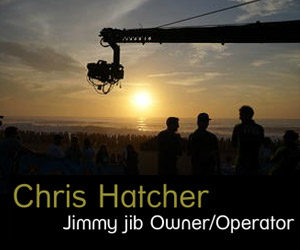Broadcast News
17/11/2015
Enterprise-Grade Connectivity From Consumer-Grade Internet

Nearly all aspects of Media Production can be done over the Cloud, from Creation to Production, Playout, Post Production, Remote Storage and Archiving, writes Johnnie Dymock, Director of Outside Broadcast & IP Connectivity specialist Wired Broadcast Ltd.
But just as "the cloud" promises almost limitless possibilities for interconnected working, with all the benefits of flexibility and efficiency, our ambitions can be limited by the fundamental problem of "first-mile" connectivity. That is, our internet connection at the studio, office or on location is often inadequate. The quality of this connection ultimately draws the line between what's possible in theory, and what we can do in practice. So how do we define the quality of an internet connection – speed, reliability, packet loss, latency or jitter?
First off, a generalised but important distinction can be made between the needs of real-time and non-real-time applications. With non-real-time applications moderate packet-loss, latency and jitter can (to some extent) be imperceptible. We are generally interested in the available bandwidth upstream and down, as it determines how quickly we can move files around and access content. And it's the bandwidth or "speed" statistic by which we're all used to judging an internet connection.
But with low-delay, real-time applications packet loss, latency and jitter performance is just as important as bandwidth. An MPEG codec will deliver broadcast-quality audio using just 64kbit/s, yet it's possible to get horrible results when using it with a mobile broadband connection that delivers several Megabit/s on a speed test. The reason for this is that real-time apps rely on data being received in a constant linear stream, with no pauses or gaps in the packet-flow, i.e. no jitter.
In the broadcast audio example, a 1⁄4 second pause caused by temporary congestion on the mobile network could cause nasty audio breakup, yet be imperceptible when browsing, sending emails, transferring files – or doing a speed test. And with broken-up sound or pictures, it doesn't necessarily follow that there is packet loss; late packets have the same effect as lost packets, because they don't arrive in time to be decoded in the correct sequence.
At temporary sites such as at an OB, our chances of accessing a decent, uncontended internet connection can be strictly limited. Consumer internet access via 3G/4G or Wi-Fi may be readily available, but poor quality and unreliable; dedicated satellite connectivity is costly and often impractical. Even at our studio or office, business-grade internet can carry an impractical premium, or simply be unavailable.
So how can we improve the bandwidth, jitter, packet loss and reliability of consumer-grade internet connections in order to take advantage of their ubiquity? The answer is by using a multi-channel VPN router that combines several internet "channels" into a single, high-quality connection.
Viprinet Europe GmbH (www.viprinet.com) manufacture a range of bonding routers that not only combine the upstream and downstream bandwidth of multiple internet connections (such as ADSL/3G/4G/Wi-Fi), but also eliminate or significantly mitigate packet loss and jitter, by using techniques such as Distributed Forward Error Correction (DFEC) and Diversity.
Using Viprinet multichannel VPN routers, broadcasters including the BBC and CBS have been able to successfully incorporate consumer internet technologies into their day-to-day production workflow.
www.wiredbroadcast.com
This article is also available to read at BFV online.
(JP/LM)
But just as "the cloud" promises almost limitless possibilities for interconnected working, with all the benefits of flexibility and efficiency, our ambitions can be limited by the fundamental problem of "first-mile" connectivity. That is, our internet connection at the studio, office or on location is often inadequate. The quality of this connection ultimately draws the line between what's possible in theory, and what we can do in practice. So how do we define the quality of an internet connection – speed, reliability, packet loss, latency or jitter?
First off, a generalised but important distinction can be made between the needs of real-time and non-real-time applications. With non-real-time applications moderate packet-loss, latency and jitter can (to some extent) be imperceptible. We are generally interested in the available bandwidth upstream and down, as it determines how quickly we can move files around and access content. And it's the bandwidth or "speed" statistic by which we're all used to judging an internet connection.
But with low-delay, real-time applications packet loss, latency and jitter performance is just as important as bandwidth. An MPEG codec will deliver broadcast-quality audio using just 64kbit/s, yet it's possible to get horrible results when using it with a mobile broadband connection that delivers several Megabit/s on a speed test. The reason for this is that real-time apps rely on data being received in a constant linear stream, with no pauses or gaps in the packet-flow, i.e. no jitter.
In the broadcast audio example, a 1⁄4 second pause caused by temporary congestion on the mobile network could cause nasty audio breakup, yet be imperceptible when browsing, sending emails, transferring files – or doing a speed test. And with broken-up sound or pictures, it doesn't necessarily follow that there is packet loss; late packets have the same effect as lost packets, because they don't arrive in time to be decoded in the correct sequence.
At temporary sites such as at an OB, our chances of accessing a decent, uncontended internet connection can be strictly limited. Consumer internet access via 3G/4G or Wi-Fi may be readily available, but poor quality and unreliable; dedicated satellite connectivity is costly and often impractical. Even at our studio or office, business-grade internet can carry an impractical premium, or simply be unavailable.
So how can we improve the bandwidth, jitter, packet loss and reliability of consumer-grade internet connections in order to take advantage of their ubiquity? The answer is by using a multi-channel VPN router that combines several internet "channels" into a single, high-quality connection.
Viprinet Europe GmbH (www.viprinet.com) manufacture a range of bonding routers that not only combine the upstream and downstream bandwidth of multiple internet connections (such as ADSL/3G/4G/Wi-Fi), but also eliminate or significantly mitigate packet loss and jitter, by using techniques such as Distributed Forward Error Correction (DFEC) and Diversity.
Using Viprinet multichannel VPN routers, broadcasters including the BBC and CBS have been able to successfully incorporate consumer internet technologies into their day-to-day production workflow.
www.wiredbroadcast.com
This article is also available to read at BFV online.
(JP/LM)
More Content Management Stories
01/04/2019
Rohde & Schwarz To Present R&S PRISMON A/V Monitoring And IP Baseband Multiviewer Solutions
Rohde & Schwarz is to present its latest R&S PRISMON A/V monitoring and IP baseband multiviewer solutions at NAB 2019. The firm will present its field
Rohde & Schwarz To Present R&S PRISMON A/V Monitoring And IP Baseband Multiviewer Solutions
Rohde & Schwarz is to present its latest R&S PRISMON A/V monitoring and IP baseband multiviewer solutions at NAB 2019. The firm will present its field
27/09/2018
Introducing Cosmos Technology Broadcast Systems Ltd
TV as content will never go away, but its format and devices are constantly changing. As TV becomes more digitized and smart, the line between TV and
Introducing Cosmos Technology Broadcast Systems Ltd
TV as content will never go away, but its format and devices are constantly changing. As TV becomes more digitized and smart, the line between TV and
15/05/2018
Cutting Edge Technology And Innovative Solutions Unveiled At NAB 2018
Despite temperatures soaring to 30 degrees in Las Vegas, a record number of visitors attended the world's largest convention which encompasses the con
Cutting Edge Technology And Innovative Solutions Unveiled At NAB 2018
Despite temperatures soaring to 30 degrees in Las Vegas, a record number of visitors attended the world's largest convention which encompasses the con
11/04/2018
DRILLARIUM: Large Scale Playout
The current broadcast environment requires hundreds of channels to be supervised by a single operator. Vector 3 has created DRILLARIUM, the tool for t
DRILLARIUM: Large Scale Playout
The current broadcast environment requires hundreds of channels to be supervised by a single operator. Vector 3 has created DRILLARIUM, the tool for t
06/04/2018
Chart Your Future With PROVYS Scheduling
As every ship's captain recognises, it is very important to know exactly where we are heading, together with how, when and at what cost. Successful na
Chart Your Future With PROVYS Scheduling
As every ship's captain recognises, it is very important to know exactly where we are heading, together with how, when and at what cost. Successful na
07/03/2018
PlayBox Technology To Demonstrate Latest Advances At NAB
PlayBox Technology will exhibit the latest advances to its Neo and CloudAir broadcast channel branding and playout solutions at the NAB Show (07-12 Ap
PlayBox Technology To Demonstrate Latest Advances At NAB
PlayBox Technology will exhibit the latest advances to its Neo and CloudAir broadcast channel branding and playout solutions at the NAB Show (07-12 Ap
12/02/2018
SWISS TXT Revolutionises Live Subtitling Market With SaaS Solution
SWISS TXT has revolutionised the live subtitling market with an SaaS solution. The service was first used for MTG TV Norway at the European Handball C
SWISS TXT Revolutionises Live Subtitling Market With SaaS Solution
SWISS TXT has revolutionised the live subtitling market with an SaaS solution. The service was first used for MTG TV Norway at the European Handball C
24/11/2017
PlayBox Technology Neo Powers New HD Channel at main.tv
main.tv, one of Bavaria's leading regional broadcasters, has chosen PlayBox Technology Neo as the core playout system for its new high definition tele
PlayBox Technology Neo Powers New HD Channel at main.tv
main.tv, one of Bavaria's leading regional broadcasters, has chosen PlayBox Technology Neo as the core playout system for its new high definition tele
23/08/2017
Cloud And AI To Scare The Industry At IBC Again
Everyone knows about penetration by IT technologies in the sphere of broadcast engineering. Although the IT and engineering campuses are still poles a
Cloud And AI To Scare The Industry At IBC Again
Everyone knows about penetration by IT technologies in the sphere of broadcast engineering. Although the IT and engineering campuses are still poles a
23/08/2017
Workflows Need To Change To Unlock The Benefits of IP
The primary advantage of an IP-based system is the convergence of multiple signal formats onto a comprehensive, distributed IP switch fabric that seam
Workflows Need To Change To Unlock The Benefits of IP
The primary advantage of an IP-based system is the convergence of multiple signal formats onto a comprehensive, distributed IP switch fabric that seam















